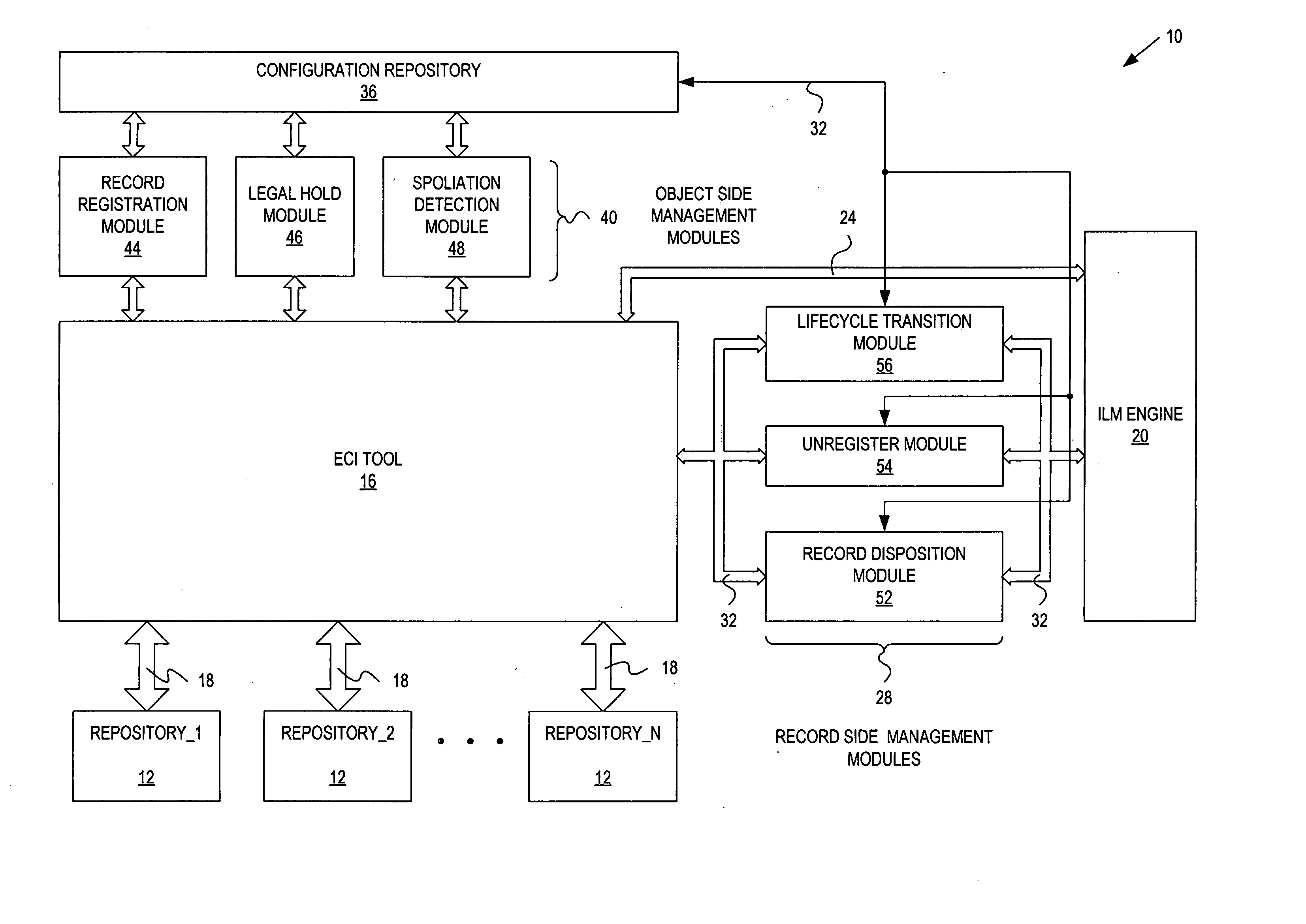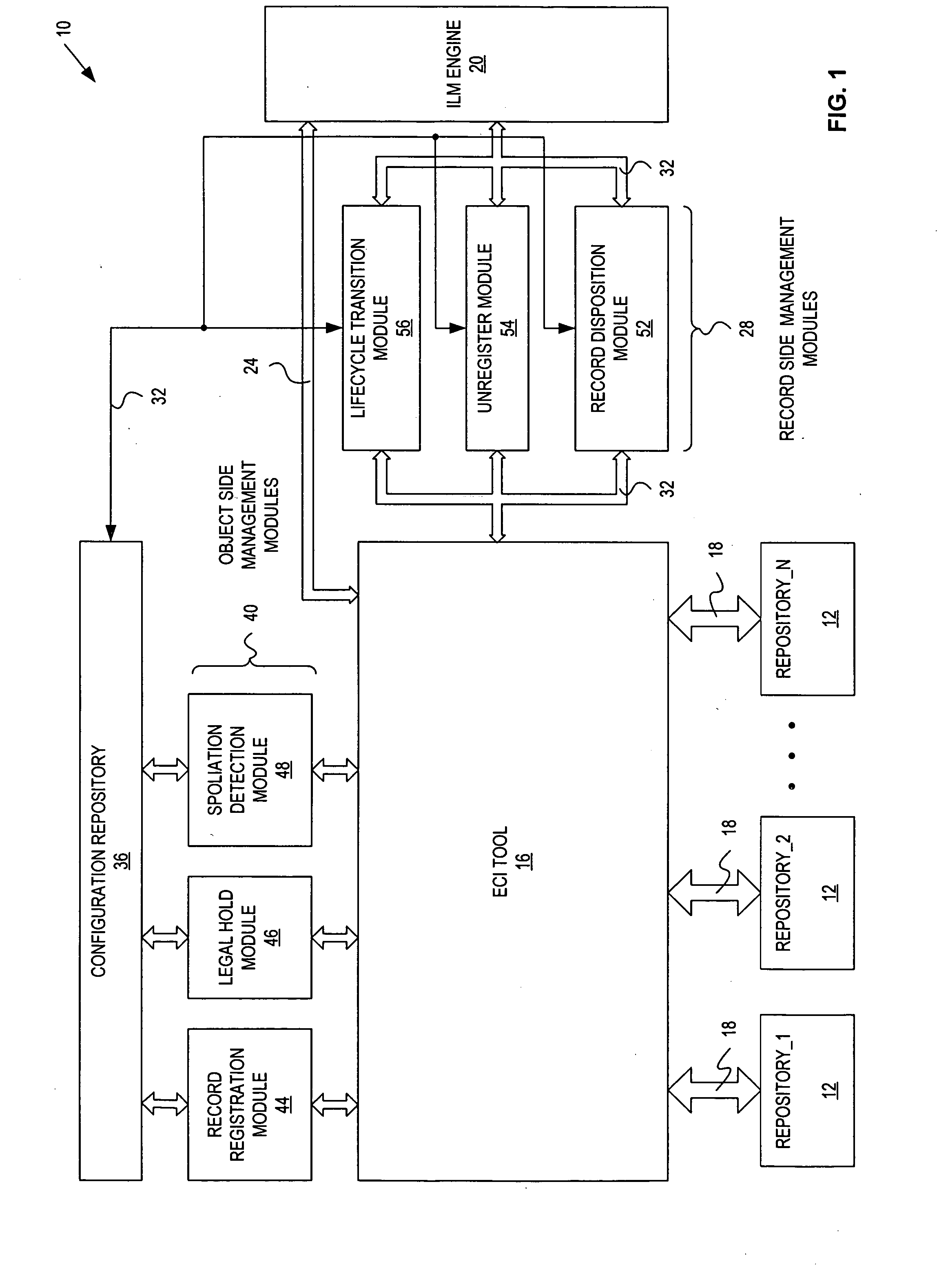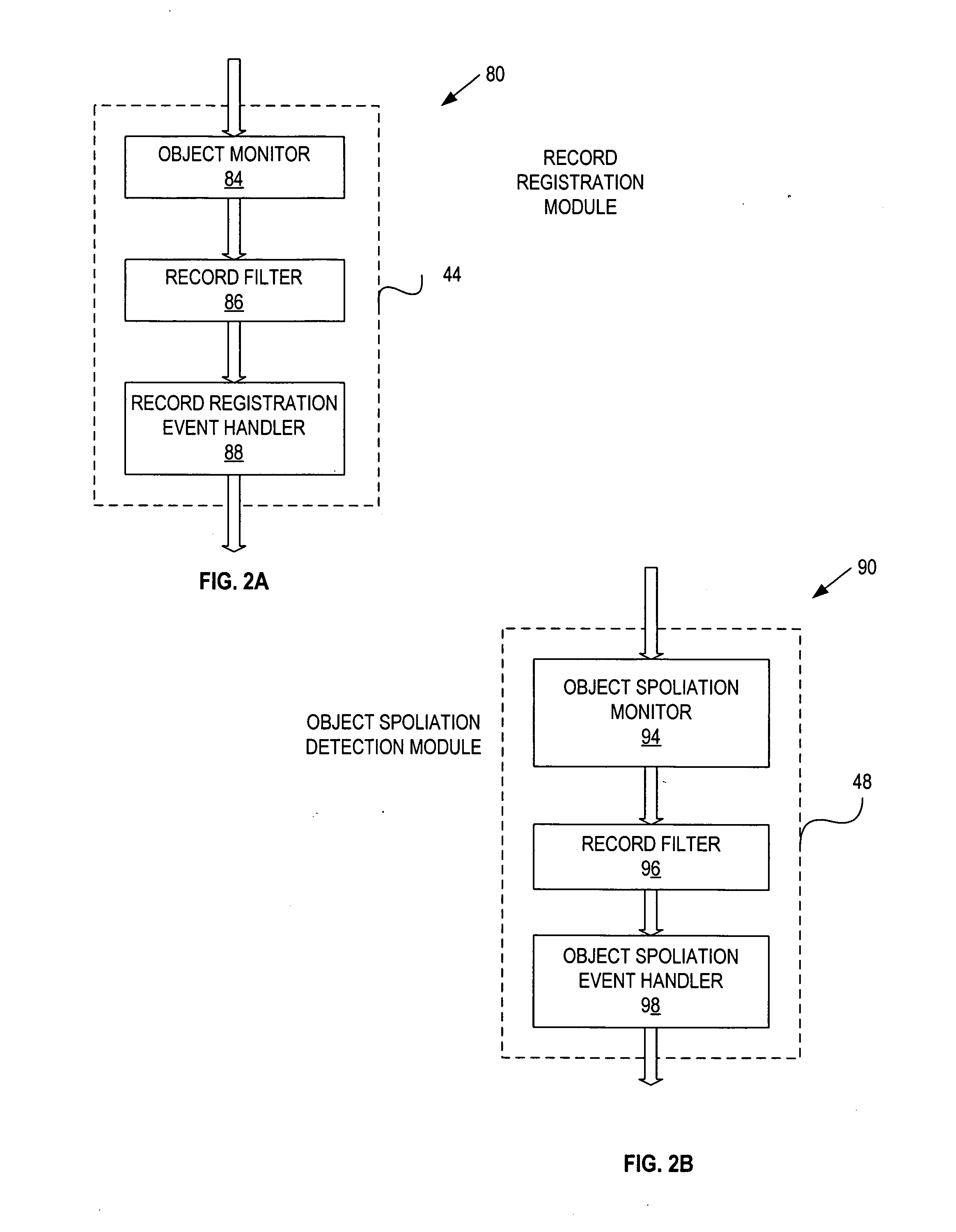Records management federation
a record management and federation technology, applied in the field of records and document management, can solve the problems of record management becoming an incredibly difficult challenge for even the largest and most sophisticated corporations, and the management of records has become far more complex in the modern world
- Summary
- Abstract
- Description
- Claims
- Application Information
AI Technical Summary
Benefits of technology
Problems solved by technology
Method used
Image
Examples
Embodiment Construction
[0033]FIG. 1 shows a schematic block diagram illustrating a records management system at 10 in accordance with one embodiment of the present invention for managing objects stored in a plurality of N different types of content repositories 12 designated REPOSITORY_1, REPOSITORY_2 . . . REPOSITORY_N, where N is any integer number. In one embodiment, each of the content repositories 12 may be provided by a different vendor. As such, each of the content repositories may have a different native application programming interface (“API”). The content repositories may be implemented by commercially available systems such as IBM Content Manager™, Open Text Livelink™, Documentum™, FileNet™ Content Services, Hummingbird DM5™, SAP™, PeopleSoft™, Microsoft Exchange™, or Lotus Domino™. As explained below, the records management system 10 provides a uniform method for applying records control functions to objects stored in all of the content repositories 12.
[0034] The system 10 includes: an enter...
PUM
 Login to View More
Login to View More Abstract
Description
Claims
Application Information
 Login to View More
Login to View More - R&D
- Intellectual Property
- Life Sciences
- Materials
- Tech Scout
- Unparalleled Data Quality
- Higher Quality Content
- 60% Fewer Hallucinations
Browse by: Latest US Patents, China's latest patents, Technical Efficacy Thesaurus, Application Domain, Technology Topic, Popular Technical Reports.
© 2025 PatSnap. All rights reserved.Legal|Privacy policy|Modern Slavery Act Transparency Statement|Sitemap|About US| Contact US: help@patsnap.com



